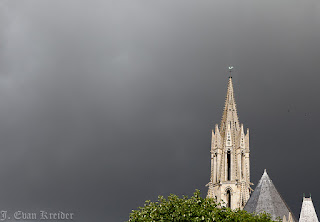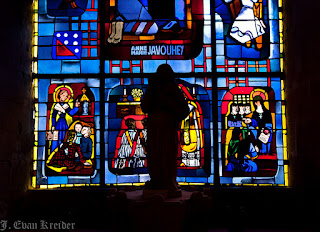Senlis was the third city to have a church built in the new Gothic style (after the Abbey of St Denis just north of Paris, and the Cathedral of Noyon). The present structure was begun in 1153 and essentially enclosed by 1191. Louis VII was particularly generous, granting Senlis a municipal charter of rights and several grants toward the construction of the cathedral. A severe lightning strike forced the citizens of Senlis to make extensive repairs to the cathedral's vaulting, and as time passed, the authorities opted to devote considerable resources to updating the cathedral's architectural style. Consequently, one can see a wide variety of styles in this one building. During the Revolution, Senlis fell on hard times, but was not dismantled since it was used to store the statuary of other churches. It did suffer interior damage to its own stonework until the French government finally declared it to be a national monument. Today this magnificent church is an active place of worship, recalling the centuries when it was a cathedral, but the church now lack the customary choir stalls, etc., all of which had been removed earlier.
 |
| Prayer Room, often used |




































